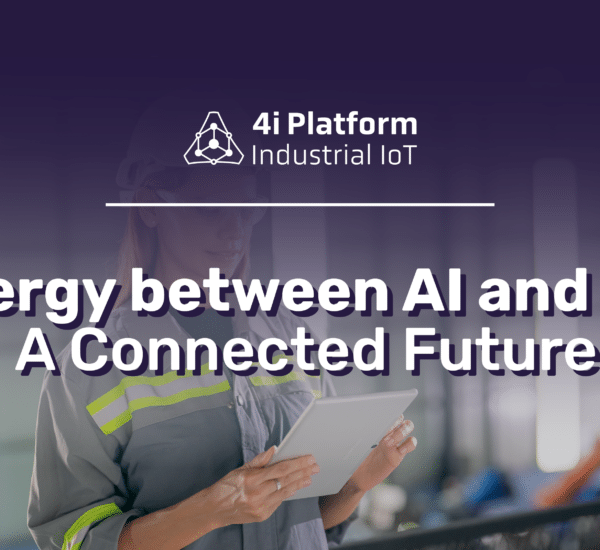Did you know that by 2050 it will be necessary to increase global food production by 70%? According to the United Nations, by that year there will be 9.7 billion inhabitants on Earth, which represents a great challenge for the industry, since a confluence of factors has been generated in recent years: the reduction of available agricultural land, the scarcity of essential natural resources such as fresh water and arable land, and the significant decrease in the workforce in the agricultural sector.
In this article we will address these issues facing the current business world linked to agricultural food production, and how they can be reduced thanks to the incorporation of advanced technologies such as IoT (Internet of Things). Implementing this in processes will allow farmers to manage resources more efficiently and meet the growing global demand for food in a sustainable way.
The Challenge of Food Production in the 21st Century
In recent decades, there has been a progressive decline in the agricultural labor force, which has been driven by several factors, such as migration to urban areas in search of better job opportunities, and the aging of the rural population. This situation, combined with the impacts of climate change and the overexploitation of natural resources, poses serious challenges for food production in the coming decades. In this context, the adoption of advanced technologies, such as the Internet of Things (IoT), has become imperative to ensure that the agricultural sector can thrive by meeting the food needs of future generations.
Precision Farming: Maximizing Resources with IoT
Precision agriculture is an advanced approach to agricultural management that uses information and communication technologies to optimize farm efficiency and productivity. This approach relies on real-time data collection and analysis to make informed decisions about crop and resource management. The main components of precision agriculture include:
- Sensors and Monitoring: Sensors in precision agriculture are used to accurately measure critical variables that affect crop yields, such as soil moisture, temperature, light, and air quality. By constantly monitoring these factors, potential problems such as disease or water stress can be quickly identified, enabling early and accurate intervention that reduces losses and maximizes the efficient use of resources. With the integration of 4i Platform‘s SPC (Statistical Process Control) module, growers can determine which parameters they would like to monitor and analyze this data in real time, ensuring that each variable remains within optimal ranges. SPC facilitates quality control and allows for immediate adjustments to growing conditions, ensuring uniform growth and maximized production.
- GPS and Geolocation: GPS technology is used to map fields and manage crops with precision, reducing excessive input use and minimizing environmental impact. With 4i Platform’s Asset Tracking System, farmers can track the exact location of farm machinery, vehicles and other assets in real time. In addition, with the WMS it is possible to map the distribution and movement of inputs such as seeds, fertilizers and equipment within the fields.
- Big Data and Analytics: The collected data is analyzed by specialized software that provides recommendations on the best way to manage crops. 4i Platform’s OEEasy collects and analyzes large volumes of data on farm machinery operating efficiency in real time. This analysis identifies patterns and trends in equipment performance, providing recommendations on how to optimize their use to maximize crop productivity.
- Automated Machines: Tractors, drones and other automated equipment are used in agriculture to perform tasks with high precision, such as planting, fertilizer application, irrigation and harvesting. These machines, being equipped with advanced technology and autonomous navigation systems, can operate efficiently and significantly reduce the margin of error in farming operations. By integrating ELT (4i Platform’s solution for preventive maintenance of machinery), farmers can ensure that this equipment operates optimally and without interruption, maximizing productivity and extending the life of the equipment.
- Sustainable Resource Management: Precision farming enables more efficient use of resources such as water, fertilizers and pesticides, contributing to environmental sustainability and reducing operating costs. CEnergy is 4i Paltform‘s solution that allows farmers to monitor and manage in real time the consumption of energy sources in their farming operations. By analyzing energy usage data, it is possible to identify patterns and areas of consumption reduction without affecting productivity, thus contributing to a more efficient use of resources such as water, energy or gas.
Undoubtedly, precision agriculture is one of the main areas where IoT is revolutionizing the agricultural sector. The IoT solutions developed by 4i Platform play a crucial role in this process, allowing farmers to monitor and control every aspect of their production in real time, which translates into high yields, optimized use of resources and a reduced carbon footprint on the planet. In addition, studies have shown that IoT adoption can reduce operating costs by 15-20%, improving profitability for farmers.
Conclusion: The Future of Agriculture is Smart and Sustainable
As the agricultural sector faces increasing challenges, IoT solutions are proving crucial to ensure the sustainability and efficiency of food production. With the implementation of technologies that enable more accurate, automated and data-driven food production, the agriculture of the future will be better prepared to respond to the demands of the coming decades, ensuring a sustainable and secure food supply for generations to come.





